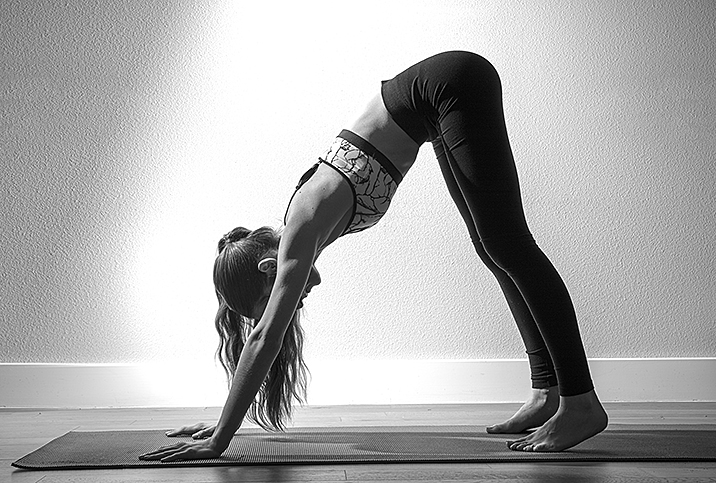How to Namaste Your PMS Away

Monthly menstrual symptoms can be disruptive because, for many women, these symptoms are so much more than just craving chocolate or feeling a little bloated. These complications can impact our mood, sometimes having damaging effects on our relationships and quality of life. Fortunately, with yoga and meditation, you can help to counter some menstrual symptoms by calming the mind and stretching your body.
The physical menstrual symptoms
Some of the more common physical menstrual symptoms are fatigue, pain and bloating. These symptoms can happen during menstruation but also in the weeks leading up to our period (PMS). At best, these symptoms can leave us uncomfortable in our own skin, but at worst, they can impact our digestion and could force some women to sit out of their favorite activities.
Establishing a regular yoga practice can help us overcome fatigue by focusing on our breathing. The breath practices utilized in Hatha and Ashtanga yoga help to oxygenate our blood, stimulating our minds and energizing us for the day.
Traditionally, yoga is done at sunrise or sunset to help either prepare for the day or unwind after a busy day. Regardless of when you choose to practice yoga, it can help to relax the mind and relieve stress while eliminating premenstrual mood swings and pain.
The movements of yoga, such as bridge, cobra, upward dog and downward dog, elongate the spine and stretch the abdominal muscles, which can help to relieve cramps caused by abdominal contractions before and during menstruation.
Spinal twists such as standing angle twist and simple seated spinal twists can stimulate the intestines, which can move painful gas pockets and constipation that causes bloating, abdominal cramps and uncomfortable feelings of fullness. Regular, daily practice of yoga can also help to regulate digestion and relieve stress-induced intestinal flare-ups for individuals with irritable bowel syndrome (IBS).
Managing mood swings
In addition to the physical benefits, yoga is a meditative practice. The active practice of focused movement in combination with the breath helps to quiet the mind and unify breath, body and thought to induce a state of active meditation.
Many people misunderstand meditation and mindfulness as sitting on a cushion and saying oommmmm, but meditation is really just observing the thoughts of the mind and choosing not to dwell on the negative, mood-impacting shifts. Meditation can be done anywhere, meaning that any activity can be meditative and mindful, whether it's washing dishes, cleaning, doing laundry, cooking or any activity that you find your mind wandering.
Spending just five minutes a day focusing on your breath can help to alter your thought patterns and train the mind to regulate mood and emotions.
When we are in pain or experience mood swings associated with menstruation, we can use meditation to help to stabilize our moods and shift our thoughts to overcome our irritability. We can do this by focusing on breathing and using techniques such as Nadi-Shodhana Pramayana, a practice in which we alternate nostril breathing to calm the mind.
Spending just five minutes a day focusing on your breath can help to alter your thought patterns and train the mind to regulate mood and emotions. This practice can help before and during your period—and over time, you may find it can help to overcome your body's pain responses.
Starting your daily practice
If you've never tried yoga or meditation, the images of people contorted into strange positions or the idea of sitting in one spot for any length of time might be terrifying. However, the most important aspect of any yoga and meditation practice is to start small with short meditation and yoga sessions. You can join a class in person, online or purchase a prerecorded beginner yoga class. Many free classes are also available on YouTube. This will allow you to practice the same routine over and over until you feel confident to join a live class.
As you become comfortable with your yoga practice, you can add a five-minute meditation at the end of your yoga session. This can be done in a seated position, or you can lengthen the time you spend in final savasana (corpse pose).
No matter how experienced you are in yoga and meditation, focusing your practice to target your menstrual symptoms can help you to maintain your daily activities and feel in control of your cycle. Adding this workout to your daily routine can also help to promote a healthier lifestyle.


















